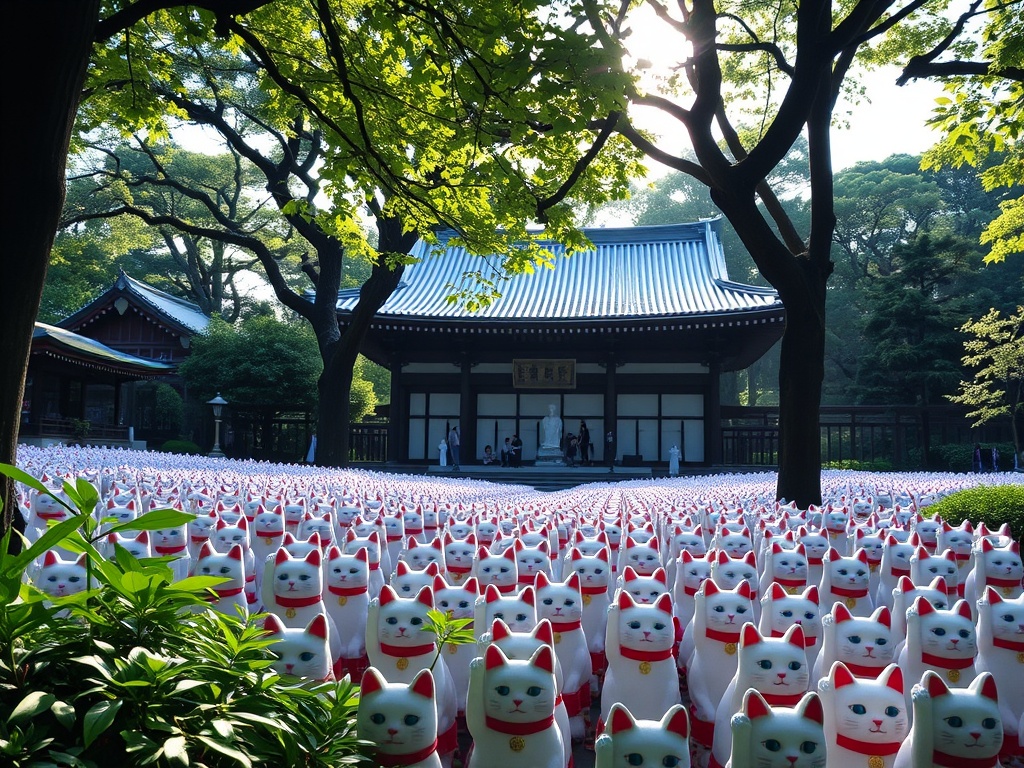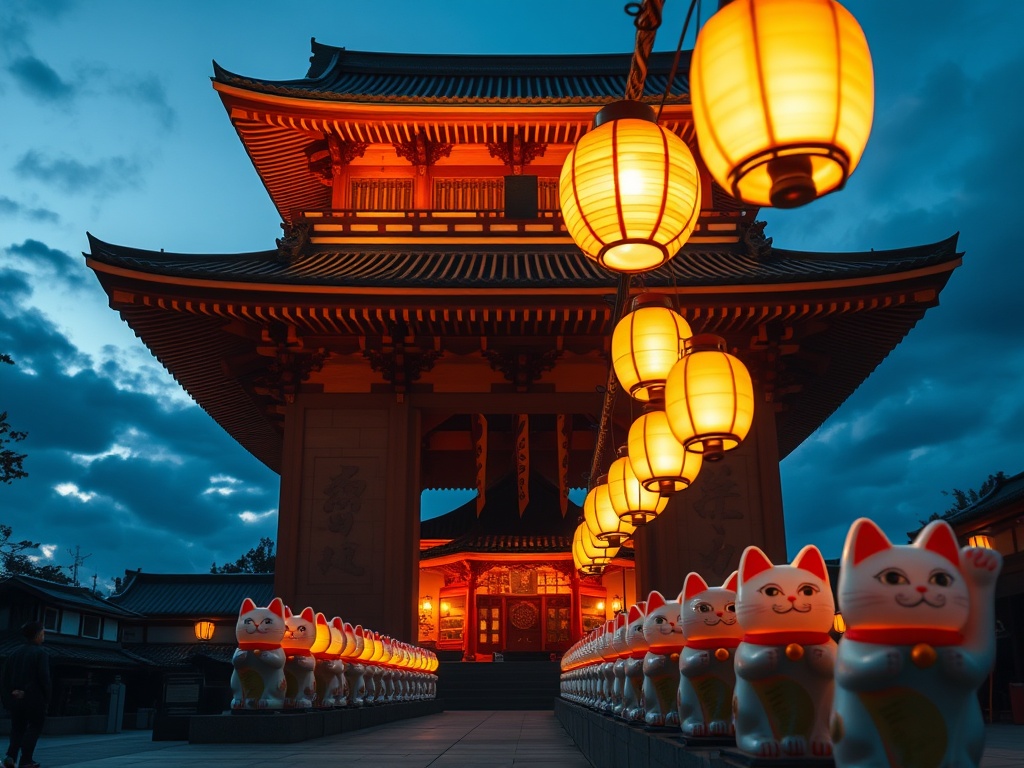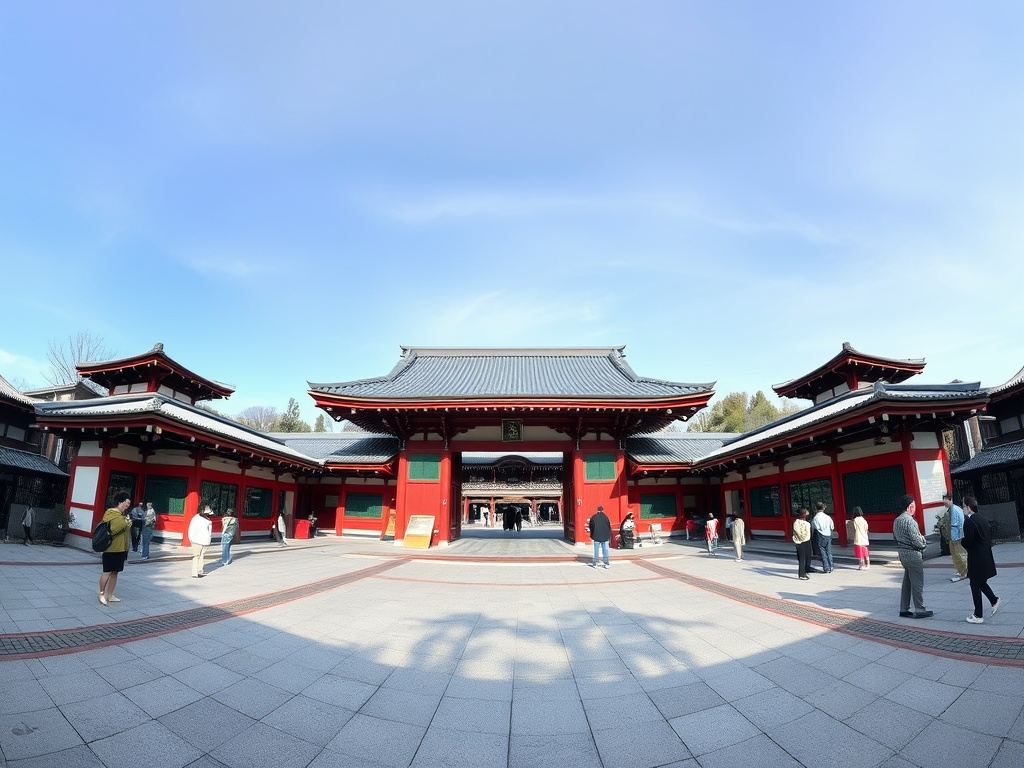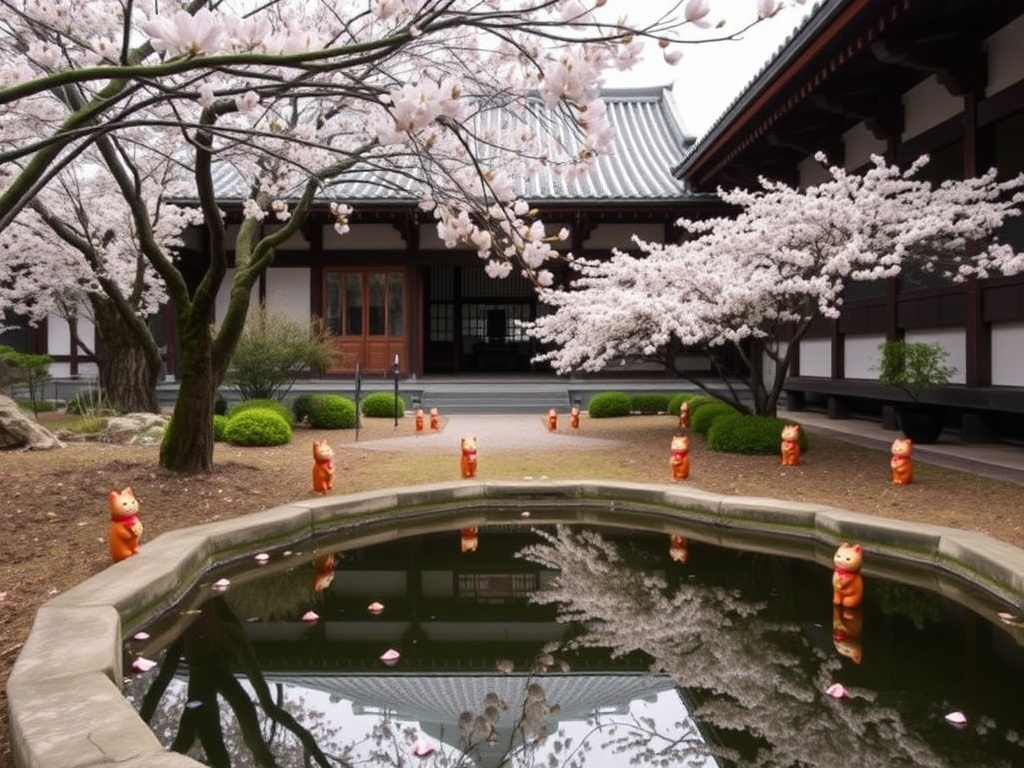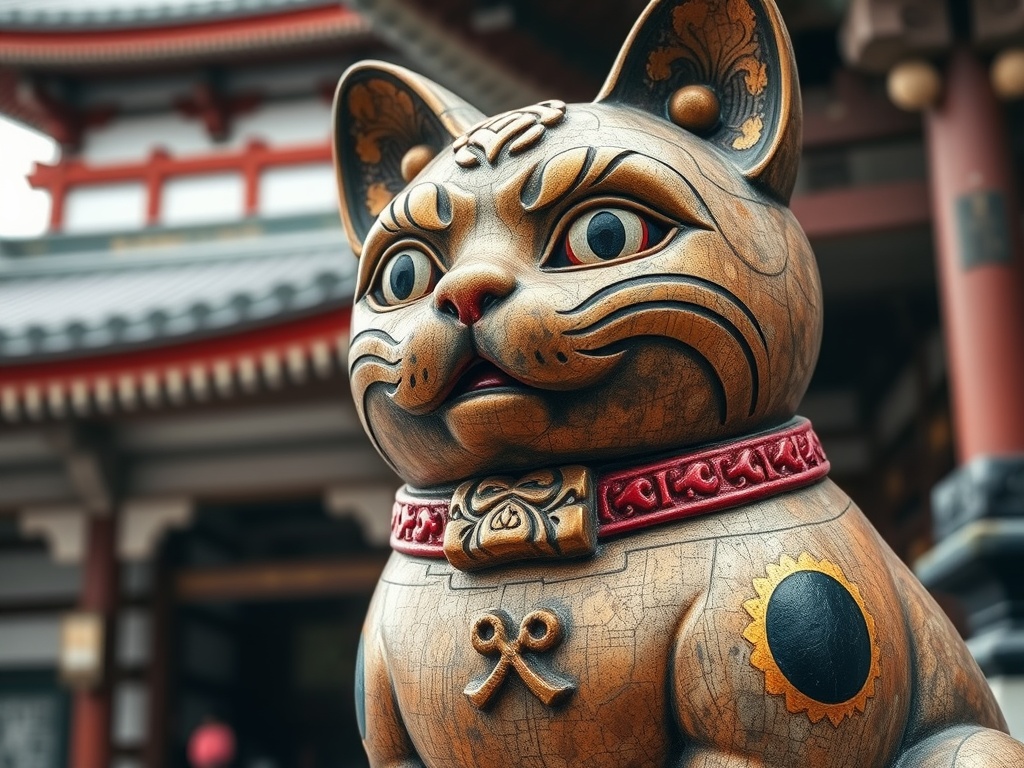Exploring Gotokuji: A Journey into the World of Maneki Neko
Win a Free Trip to Japan!
Experience cherry blossoms and ancient temples
I’ve had Gotokuji bookmarked for quite some time, ever since I stumbled upon the captivating sea of Maneki Neko (Lucky Cat) figurines on Instagram a few years back. Nestled in the vibrant neighborhood of Setagaya in Tokyo, Gotokuji finally welcomed my visit, and I couldn’t wait to explore its charm!
What is Maneki Neko?
Maneki Neko is an iconic symbol within Japanese culture, often depicted as a white cat adorned with red accents and a paw raised in a beckoning gesture. The name “Maneki Neko” translates to “beckoning cat“, aptly representing its association with good luck and fortune. It’s fascinating to note that the raised paw has different meanings: when the right paw is elevated, it is believed to attract wealth, while a raised left paw is said to draw in customers or visitors. This explains why you’ll frequently see Maneki Neko figures at the entrances of restaurants and shops, with the left paw raised to entice patrons.
Among the many tales surrounding the origins of Maneki Neko, one particularly notable story claims that it first appeared at Gotokuji, establishing the area as a famed haven for lucky cats.
Tips for Visiting Gotokuji
After my own exploration of Gotokuji, I’d like to share some handy tips that can enhance your experience:
- Allocate around 2 hours – Given that Gotokuji is a relatively small area, you can comfortably complete your visit in roughly two hours.
- Plan your visit post-10 AM – I recommend arriving after 10 AM, as most local businesses open their doors at that time.
- Avoid Mondays – While Daikenzan Gotokuji, the temple featuring countless Maneki Neko figurines, is open daily, some local establishments shut their doors on Mondays. If you’re looking to explore more than just the temple, it’s best to steer clear of Mondays, as the neighborhood tends to be quite tranquil.
- Bring cash – Although many places in Tokyo have embraced cashless payments, I found that smaller cafes in Gotokuji predominantly operate on a cash basis, so be sure to have some yen on hand for snacks!
1. Visit the Maneki Neko Statue at Gotokuji Station
Upon arriving at Gotokuji Station on the Odakyu Line, the first delightful sight awaits you just outside the station: a charming Maneki Neko statue! It sets the tone for your adventure in this lucky cat neighborhood.
2. Look Out for the Rare Maneki Neko Train on the Setagaya Line
If you’re heading to Gotokuji from Sangenjaya Station, you can transfer to the Setagaya Line. Unlike the more conventional trains in Tokyo, the Setagaya Line operates light rail trains that are typically smaller and come in vibrant hues of pink, green, or blue. However, keep your eyes peeled for the elusive Maneki Neko train! On my very first visit to Setagaya, I was fortunate enough to board this special train, only to learn later from a friend that it’s a rare occurrence—approximately one in every ten trains is a Maneki Neko train!
Should you be lucky enough to catch it, don’t miss the delightful details inside, such as:
- The train handles shaped like Maneki Neko
- Adorable cat paw prints on the floor!
3. Discover Daikeizan Gotokuji
One of the primary attractions in Gotokuji is the renowned Daikeizan Gotokuji, a Buddhist temple believed to be the birthplace of the Maneki Neko. The temple welcomes visitors free of charge, operating daily from 6 AM to 5 PM. More information about Daikeizan Gotokuji can be found here.
As you walk through the entrance gate, you’ll encounter several noteworthy sights before reaching the Maneki Neko section:
- Sanmon – the grand entrance gate of Gotokuji
- Sanju-no-to – a stunning three-story pagoda
- Komainu statues guarding the temple
To find the famed Shofuku-den Maneki Neko, turn left from Butsu-den, behind the Komainu statue. Here, a striking black Maneki Neko statue marks your arrival.
Inside, you’ll be greeted by a plethora of Maneki Neko figurines, each varying in size, with the tiniest being just slightly larger than my fingernail—utterly adorable! Take your time capturing the beauty of these cat figurines, though be prepared for a few tourists; I visited on a Thursday in December around noon, and while it was popular, it wasn’t overwhelmingly crowded. Still, getting a shot of the cat hallway without anyone else in it might pose a bit of a challenge.
Note the notices posted throughout the temple, which explain how to properly use Maneki Neko. I observed several figurines with scribbles on them, indicating that some visitors might have missed this guidance. Essentially, the process involves purchasing a Maneki Neko figurine from the temple shop, making a wish, and taking it home. The figurine is believed to help fulfill your wish, and once it comes true, you can return the Maneki Neko to the temple to ensure the good fortune remains with you.
If you wish to write down your desires and leave them at the temple, wooden Ema are available for purchase:
- Wooden Ema at Gotokuji
Unfortunately, during my December visit, the temple had sold out of all merchandise, and I was unable to buy any figurines or wooden Ema.
4. Explore the Gotokuji Neighborhood
As you step off the train and exit Gotokuji Station, you’ll find a quaint street lined with charming shops, bakeries, and cozy cafes, radiating a delightful atmosphere. This area has a similar vibe to Shimokitazawa or Jiyugaoka but is smaller and more intimate.
As you stroll along, you’ll notice that many shops feature Maneki Neko-themed decorations, often displaying a little figurine or statue at their entrances. Don’t forget to check which paw is raised on these cats; as I mentioned earlier, the cats in front of shops typically have their left paw raised, inviting customers in!
For coffee aficionados, there’s good news! You can find excellent coffee in this neighborhood, including a delightful spot right on the small street called Iron Coffee.
5. Indulge in Maneki Neko-Themed Pastries
In true Japanese fashion, the local bakeries and cafes fully embrace the Maneki Neko theme, offering a range of delightful pastries.
During my visit, I had the pleasure of trying two unique treats:
1. Shofuku-yaki Maneki Neko at Rarasand Setagaya
Opening Hours: 10 AM – 8 PM
Located right on the small street outside Gotokuji Station, Rarasand is hard to miss. They offer a selection of Maneki Neko pastries, and I opted for the Shofuku-yaki, which resembles the beloved Taiyaki but is shaped like a Maneki Neko. Prices range from 280 to 330 yen, depending on the filling you choose.
2. Maneki-Neko Dorayaki at Mahorodou Sougetsu
Opening Hours: 10 AM – 6 PM. Closed on Mondays.
Closer to Gotokuji Temple, across the railroad, is a quaint cafe selling adorable Maneki Neko Dorayaki. This traditional Japanese snack consists of two pancakes filled with sweet red bean paste, and the ones here are stamped with a delightful Maneki Neko shape.
You can take the dorayaki to-go for 280 yen, but if you prefer to enjoy it on-site, a drink purchase is required. I chose to sit inside, pairing my dorayaki with a hot Houjicha (roasted rice tea), bringing my total to around 520 yen. The cafe added to the charm by serving the treats on a cat-shaped ceramic plate.
As is my habit, I flipped over the ceramic dish after finishing my meal, curious to discover its origin. To my delight, I uncovered a charming surprise on the underside!
Such delightful details are a hallmark of Japanese culture, and I truly cherish these unexpected touches!
And with that, my enchanting afternoon in Gotokuji came to a close. I’d love to hear your thoughts in the comments below!
Planning a Trip to Tokyo?
Be sure to check out my comprehensive Tokyo itinerary for an informative travel guide and insights into this incredible city. Until next time!
